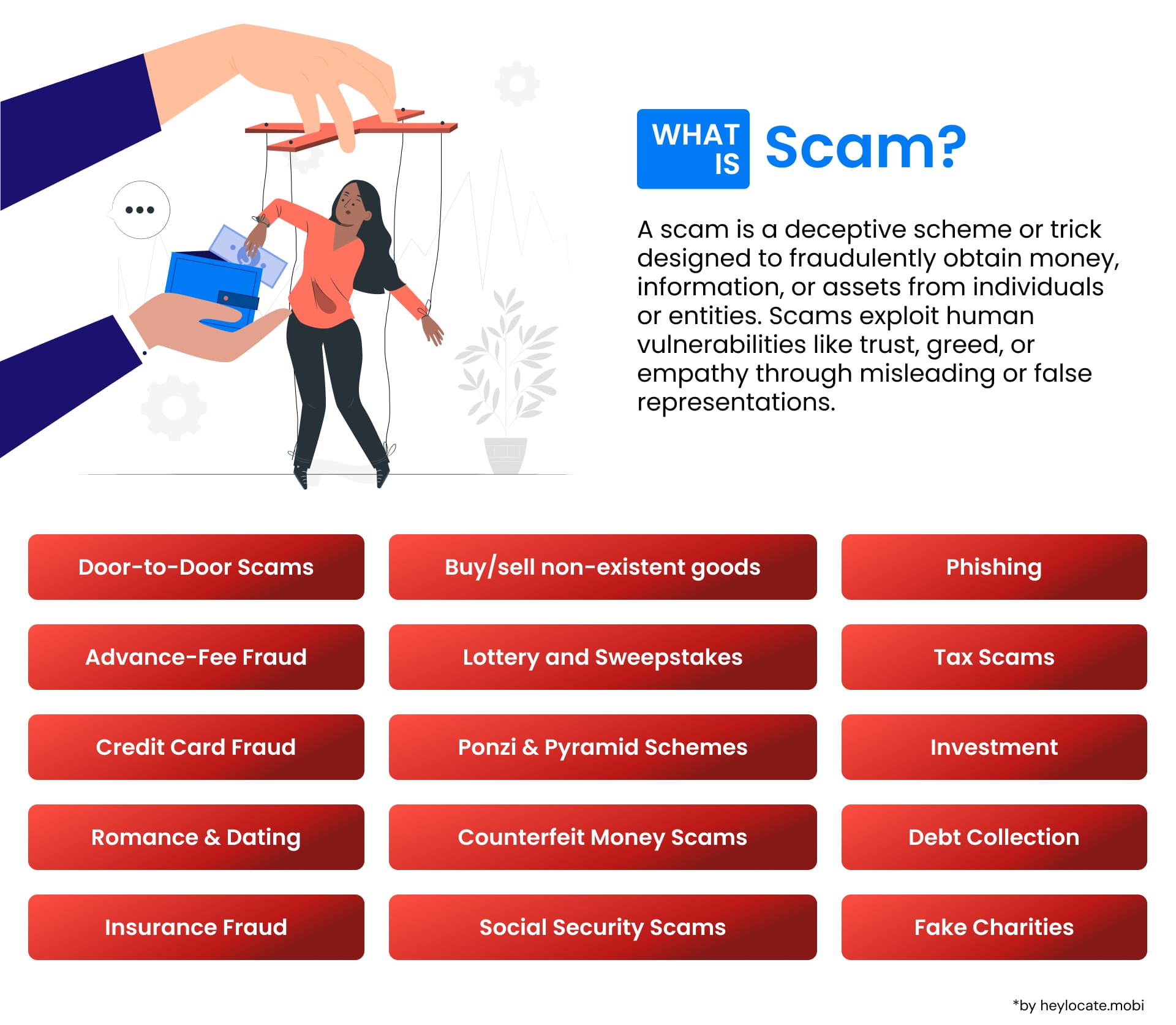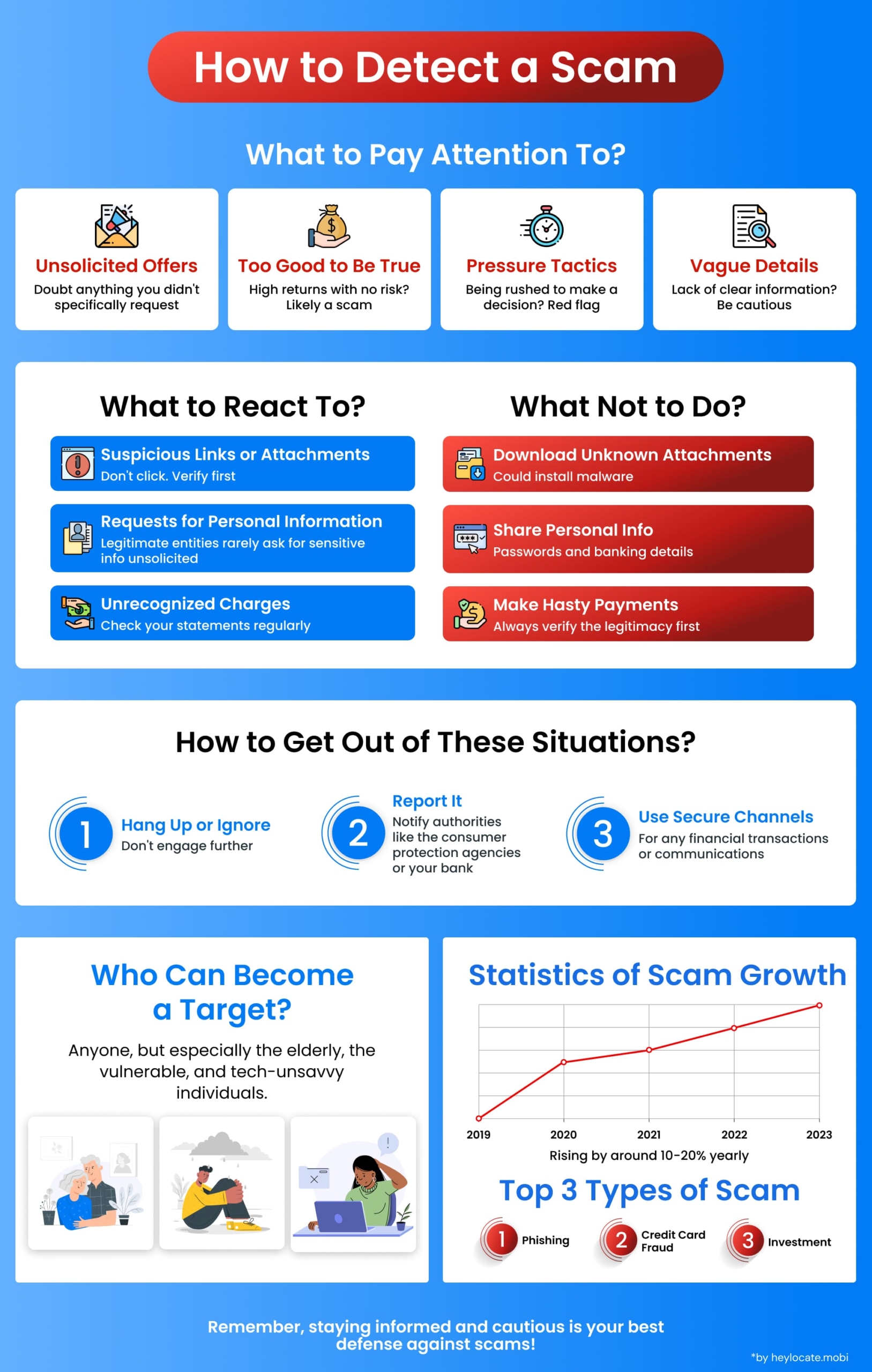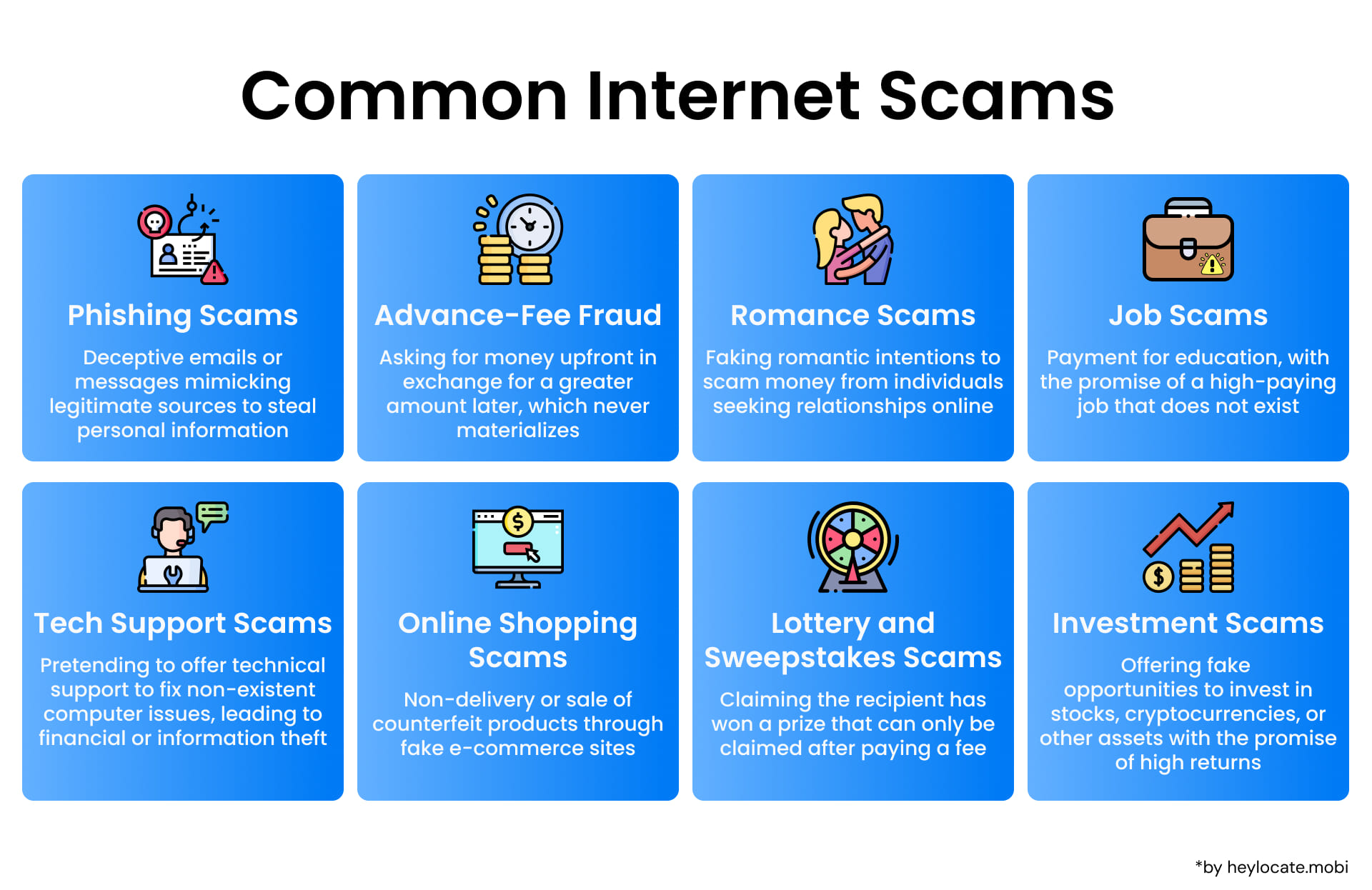Scam
What is Scam?
A scam is a fraudulent scheme or deceptive practice designed to manipulate and deceive individuals for personal gain. Scammers employ various tactics to trick their victims into parting with their money, personal information, or other valuable assets. These schemes often exploit human vulnerabilities like greed, desperation, and gullibility.

Distinction between Scams and Legitimate Practices
Scams are distinct from legitimate practices, such as marketing and sales techniques. While both may involve persuasion and influence, scams rely on deception and exploitation. Scammers often employ psychological manipulation, false promises, and misleading information to trick their victims, whereas legitimate practices operate within legal and ethical boundaries.

Terminology of Scams
- Confidence trick: A scheme that exploits the trust and confidence of the victim.
- Con game: The use of deception to trick the victim into believing they are participating in a fair game.
- Scammers: Individuals who execute the scam.
- Marks: The victims of the scam.
- Shills: Accomplices who aid the scammer in their scheme.
Classification of Scams: Short Con vs. Long Con
Scams can be classified into two broad categories:
- Short cons: Quick schemes are designed to deceive victims and obtain immediate gains. Examples include lottery scams, where victims are notified of a false lottery win and asked to pay a fee to claim their prize.
- Long cons: Elaborate schemes that require more time and effort to execute. These scams often involve building trust and establishing long-term relationships with victims before exploiting them.
Vulnerability and Victim Profile
Scammers target individuals susceptible to manipulation based on factors like greed, desperation, or gullibility. Understanding these vulnerabilities helps individuals protect themselves.
Role of Accomplices
Shills collaborate with scammers to create an illusion of legitimacy. They may pose as satisfied customers or friends to gain the trust of potential victims.
Online Scams: A Modern Menace
The advent of the internet has opened up new avenues for scammers, giving rise to a whole new breed of scams known as online scams. From phishing emails and fake online stores to romance scams and investment fraud, scammers have adapted their tactics to exploit the digital landscape.

Government and Non-profit Initiatives Against Scams
Governments and non-profit organizations play a crucial role in combating scams through:
- Law enforcement investigating and prosecuting scammers.
- Consumer protection agencies provide resources and education.
- Non-profit organizations offering support to scam victims.
References
- Scam – Wikipedia
- Ten most common types of scams | NT.GOV.AU
- What are scams? | NDIS
- Scams | ACCC
- What Is a Scam: The Essential Guide to Staying Scam-Free
- Identify a scam or fraud | ontario.ca
- Fraud vs Scams: How Are They Different? | PayPal US